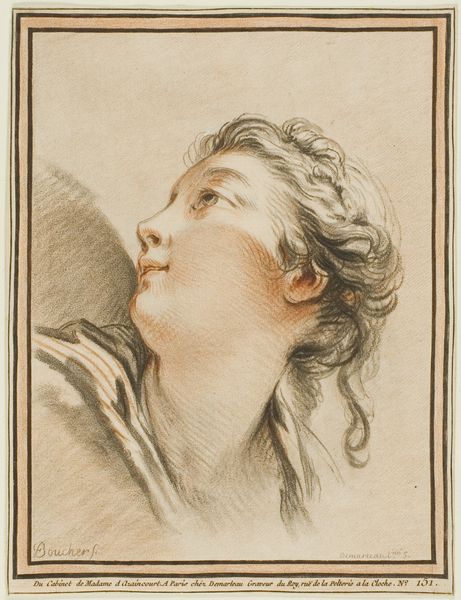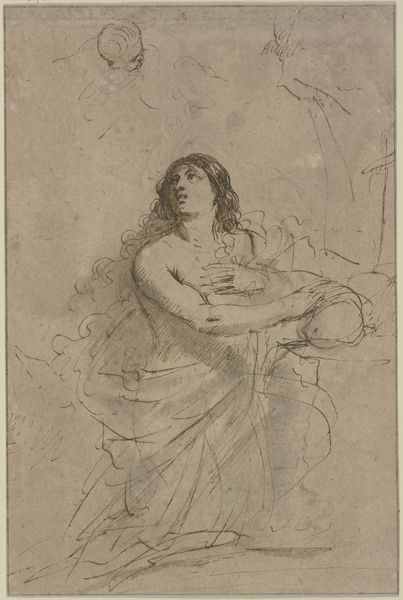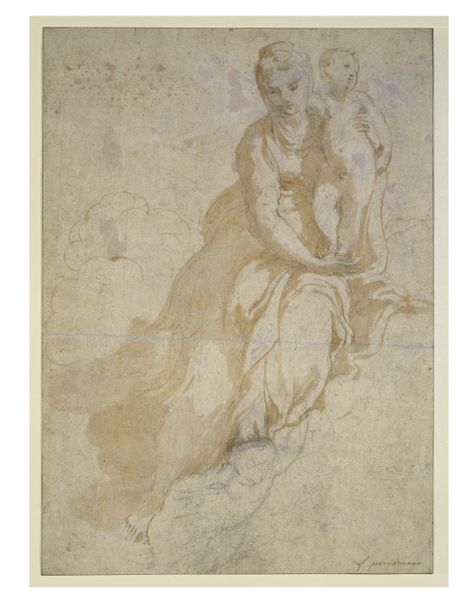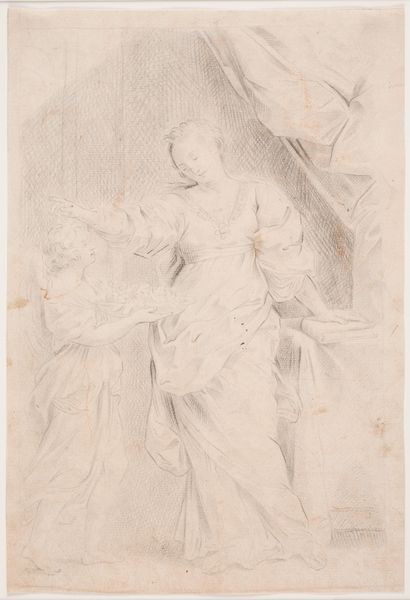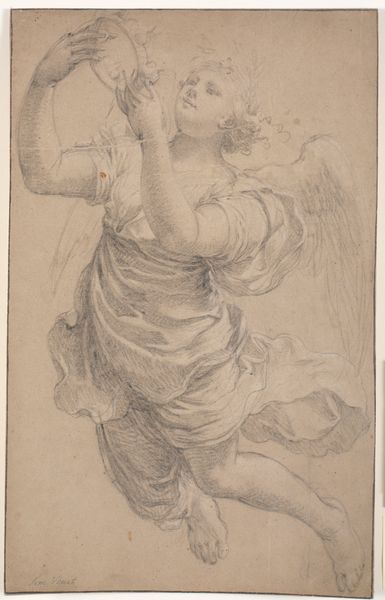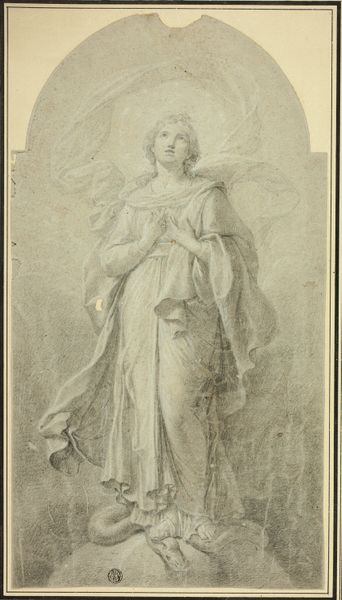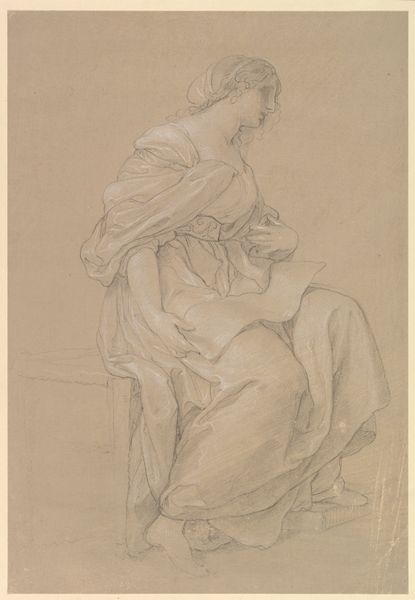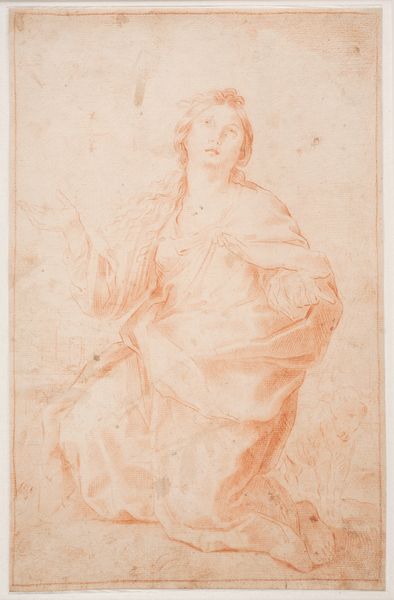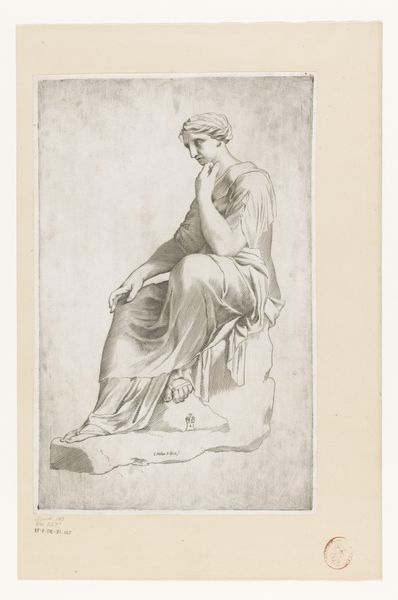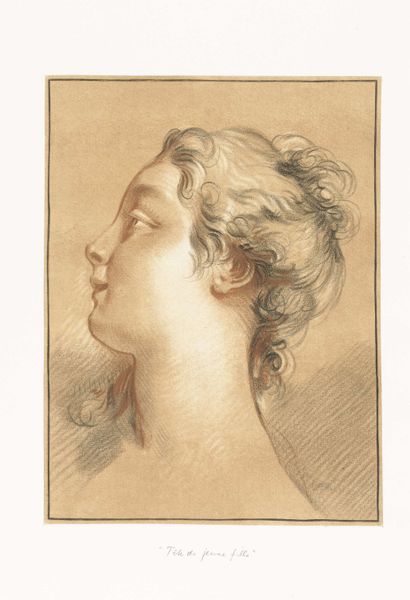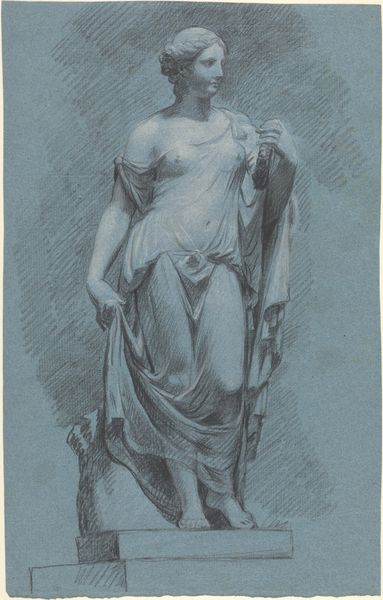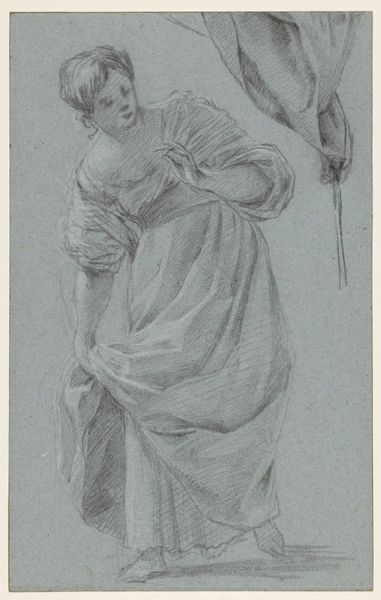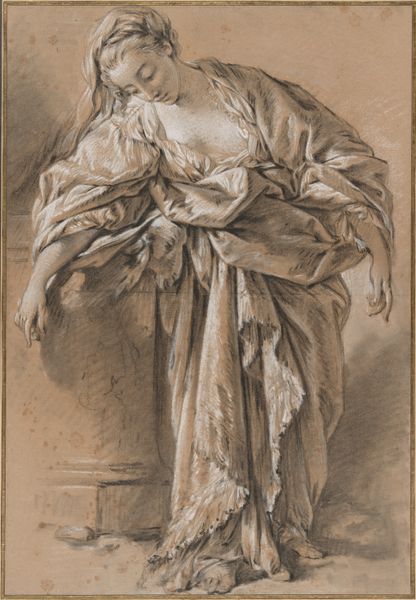
drawing, paper, ink, pencil, chalk, graphite, charcoal
#
portrait
#
drawing
#
paper
#
ink
#
pencil drawing
#
romanticism
#
pencil
#
chalk
#
graphite
#
charcoal
Dimensions: 220 × 160 mm
Copyright: Public Domain
Curator: I find myself drawn to the seeming transparency, and the implied theatricality, within this chalk, graphite, charcoal, ink, and pencil drawing. Editor: She looks contemplative; she is seemingly frozen between gestures with the lyre in hand. It makes me wonder, what has stopped her playing? Curator: It’s intriguing that you bring up that pause; let’s delve into the context a bit. This is “Woman with Lyre” by Samuel De Wilde, dating back to around 1816. De Wilde was well known for his theatrical portraits, so perhaps the pause *is* by design. We see the female figure, presumably a representation of some classical muse, poised with her instrument. Considering the period's burgeoning interest in Neoclassicism, it speaks to a broader societal engagement with the myths and morals of antiquity, though filtered through Romantic sensibilities. Editor: Absolutely, the very act of using chalk, graphite, charcoal, ink and pencil on paper here elevates ordinary materials through De Wilde's artistic labor to embody an ideal. There's a physicality and intimacy established here—an economy of material communicating grand themes. What is the paper if not rags? Curator: Your point about the elevation of the ordinary is astute! We should also consider the limited access that most women had to education or professions in the early 19th century. Music, particularly playing instruments associated with the classical world, offered a path, an opportunity for women to participate, even if decoratively, in cultural discourse and to cultivate a social identity. It brings questions to mind: what sort of work was represented and respected? And what sort was derided as domestic frippery? Editor: Indeed. And considering how art academies at the time excluded women, we must ask ourselves what opportunities existed for women who sought entry into artistic trades. If, that is, they did seek to enter them. Did this woman? Curator: That’s a thread to pursue further, certainly. I think considering the layers we have excavated from De Wilde’s drawing—from material conditions to performative identity—we gain richer insight into the subject’s world. Editor: And this serves as a prompt for reflecting on those issues in our world today.
Comments
No comments
Be the first to comment and join the conversation on the ultimate creative platform.
